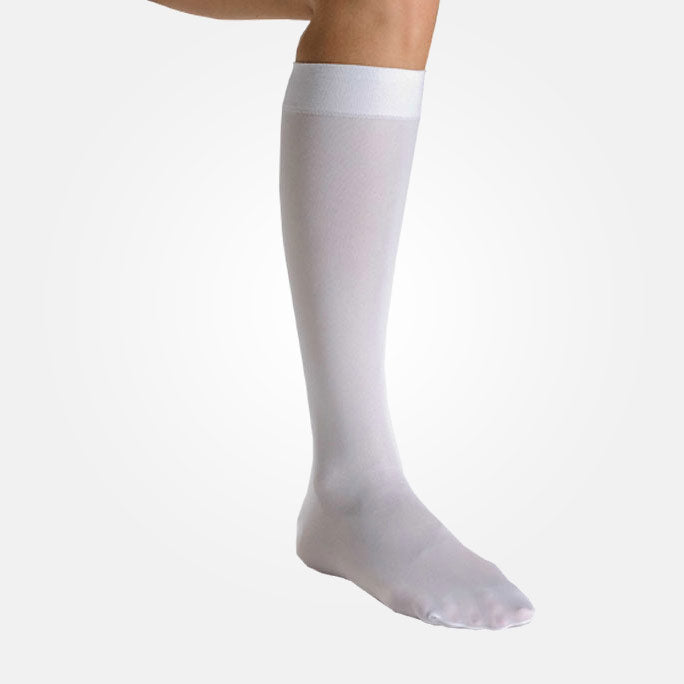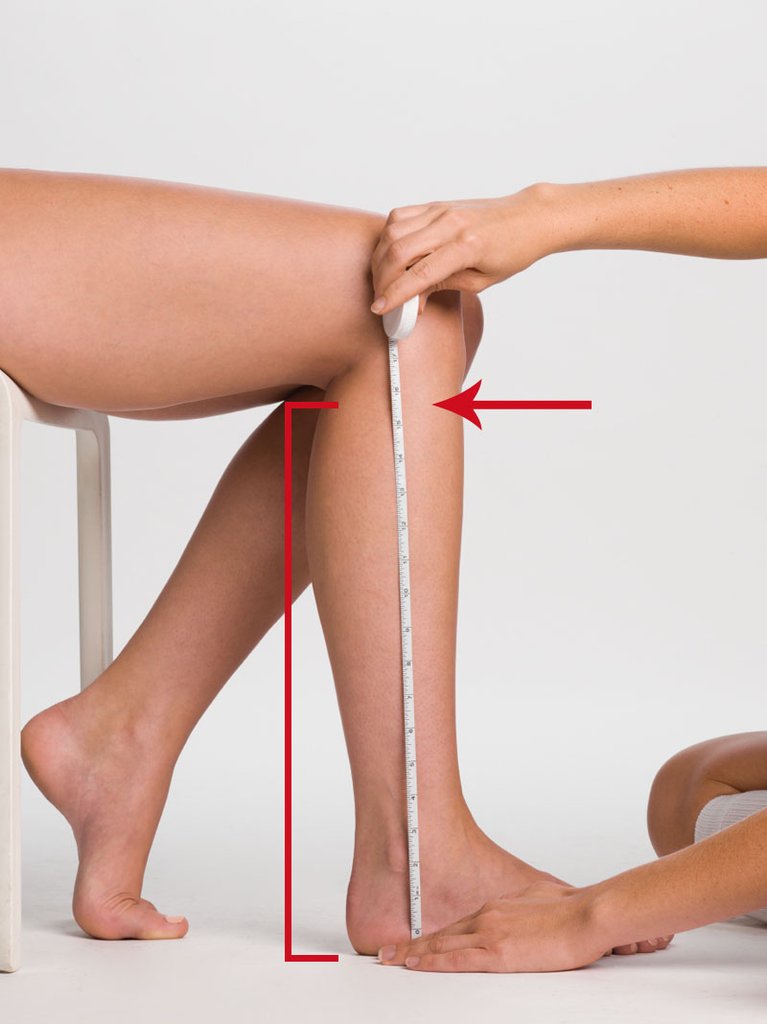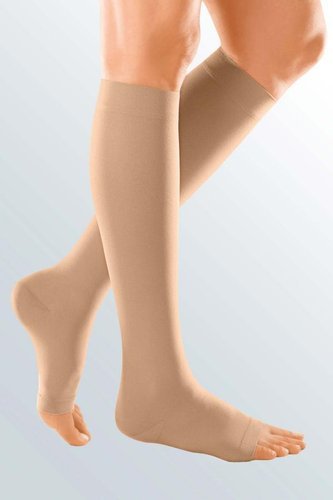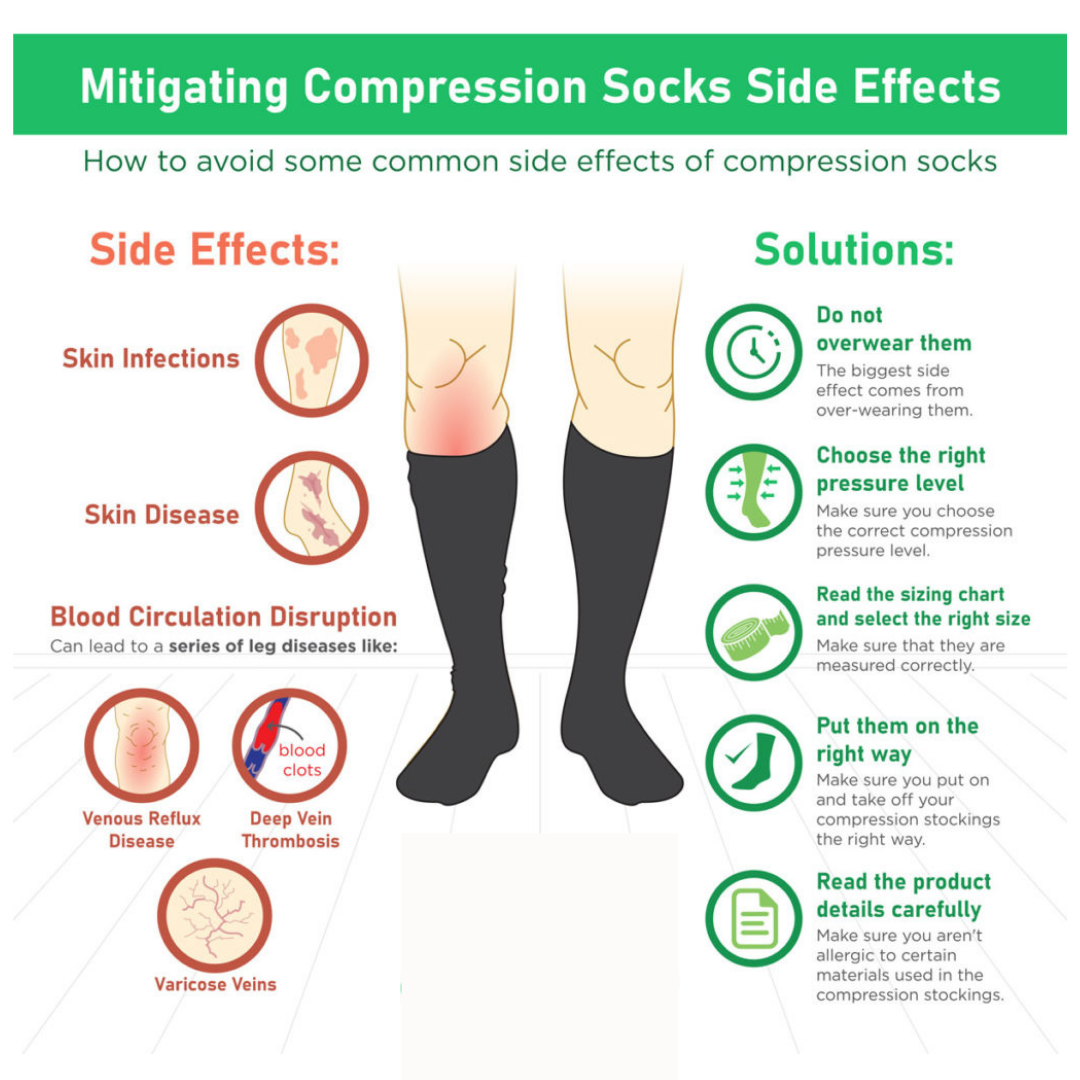Compression Socks

What are compression socks?
Compression socks (or compression stockings) are socks of various length that are designed to gently squeeze legs a bit more than typical socks. The key intention is to promote better blood circulation in the legs.
It’s a very practical and common thing. But, at the same time, it’s a very underutilized option, more people could benefit from using them.
We at Aherns Pharmacy can measure (charges may apply) and order compression socks for you.

How the Help
There are plenty of studies and evidence that compression socks work, particularly with regard to venous problems of the legs. Nearly 90% of leg disorders originate within the veins. One example is venous insufficiency. That is the failure of the valves of the veins to function, blood would be retained in the legs and you’d have diminished returns to the heart.
By gently squeezing the legs, compression socks increase the pressure in the tissues beneath the skin. This reduces excess leakage of fluid from the capillaries and it increases the absorption of this tissue fluid by the capillaries and lymphatic vessels.
The result reduced swelling and swelling prevention. Additionally, It also reduces the ability of superficial veins to expand in order to fill with blood, which prevents that blood from flowing backwards and causing congestion. If blood pools in the veins of the legs, she says, that can cause a variety of problems including skin changes, damage to vein walls and valves, inflammation of the vein (also called phlebitis thrombophlebitis), varicose veins and even blood clots.
Besides venous insufficiency, another common reason for wearing compression socks is to aid in blood flow when you’re sitting for long periods of time, like a long flight. With less movement and weaker circulation, there’s more pooling and retention of blood in the legs which can raise chances of clots. While the threat of clots isn’t that high if you’re healthy, you’ve probably noticed discomfort or swelling still taking place on long fights. Compression socks help keep that circulation going and reduce those symptoms.

How to Measure
Compression stocking measurement – we provide a measuring service for patients who require compression stockings due to varicose veins, legs ulcers, pregnancy etc.
Make an appointment for the early morning so that the measurement can be taken before any swelling occurs.

Types of Compression Socks
You’ll generally find two types of compression socks: graduated and anti-embolism stockings. As always, the Pharmacist will be able to answer any questions you have.
Graduated compression socks are the more common types you’ll find and what most people use. While available in a range of compression tightness, these socks are all tightest around the ankle, getting looser the higher up the leg they go. Compression socks generally come in two lengths — knee-high and thigh-high — but full compression tights are growing more common with athletes.
Anti-embolism stockings are more specific in purpose. They’re designed to help maintain circulation, thus preventing blood clots, for bed-bound patients, particularly those confined to bed after surgery.
CAN ANYONE WEAR THEM ?
The great thing about compression socks, is that you don’t need a doctor’s approval to try them and for most people, there are no risks to giving them a go. Some people might be worried by the fact compression socks are tighter than normal socks or the indentations compression socks leave on their legs. They may be worried about whether or not the compression socks are actually cutting off their circulation. That’s a misnomer for 99% of people, that’s just not the case.
The only place issues might crop up is for unhealthy individuals who have severe reduction of their heart function or they have a severe peripheral arterial disease where they have poor blood flow between either the feet or legs and the heart. While compression socks may be most associated with older patients, they’re actually applicable for adults of any age. You just need to try it for your own personal use to know if it’s right for you or not give up on it after just one day, whether it’s for everyday use or as an athlete.

Advice for new wearers
If it’s your first time wearing compression socks, but you find them uncomfortable as you wear them throughout the day, it’s okay to take them off. Don’t feel you have to wear them from breakfast to dinner. Sometimes you need to adjust to them if you find them uncomfortable, like when you break in a new pair of shoes.
One more thing to consider is below- or above-knee socks below-knee are more common. If you have thicker calf muscles, go with the above-knee compression socks as sometimes that extra few inches of material can create more comfort at the top of your calf so it’s not necessarily tight on your skin there.
Remember, compression socks are just one part of your regiment. Make sure you’re drinking plenty of water, consuming a low-salt diet and moving your legs.
Between just sitting for long periods of time or just standing for long periods of time can cause swelling in the legs. Try to find that happy balance between the two, keeping your muscles working and not just succumbing to gravity.
